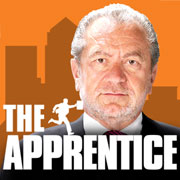
You step into a lift and someone asks “What do you do?” They are getting off in a few floors, so you only have seconds to gain their interest and pass off your business card. How will they remember you? Amber Raney-Kincade’s workshop is dedicated to creating your specific elevator pitch. You will leave this seminar with a pitch you can begin using immediately.
I attended this workshop yesterday at the City Business Library near the Barbican as part of my journey to create the perfect elevator pitch for the Business & IP Centre (How elevated is your pitch?) Read on to see if I have succeeded.
I have included Amber’s description of her workshop in full above, as it is a wonderful example of a pitch in its own right.
I have decided for this workshop review to try and give an insight into the process. So I am going to include my working notes for my pitch, along with the topics covered by Amber.
1. The five W’s and H are common approaches when first tackling a business related problem, and are used here:
Who is the subject of the elevator pitch?
The British Library Business & IP Centre
What does the person or business do?
We provide information, training and support for inventors and start-up business.
Where does the business or service operate?
We are located within the British Library at St Pancras in north London. Next door to Kings Cross.
When is the service available?
We are open Monday to Saturday from 9.30am to 8pm (5pm on Fridays and Saturdays).
Why offer the product or service?
We want to make use of our existing information to make the British Library more useful to inventors and start-up business.
How does the product or service work?
We give free on-site access to millions of pounds of market research reports, directories, trade journals, company databases, with workshops and free advice clinics.
2. Understand the pains of your customers, so you can present your solutions to their problems.
For the Business & IP Centre customers this includes a lack of knowledge of:
o Their market place
o Their competitors
o Relevant legislation
o Intellectual Property protection
o Facts to back up their gut feelings
o How to prioritise
3. Next Amber made us look at the components of our business or service
What is the service, product, company etc?
Information, training and support for inventors and start-up business.
What problems does it solve?
Inventors and start-up business need to know more about their market place, their competitors, relevant legislation, Intellectual Property protection, facts to back up their gut feelings and how to prioritise.
How am I different?
We hold the largest collection of freely available market research and business information in the world. We understand the role of intellectual property in protecting a start-up or growing business.
Why should your customers care?
So you don’t waste time and money, and make the right decisions for your business.
4. Amber showed us how to structure a pitch. It needs to:
– Have a hook
– Be straightforward (especially no jargon)
– Establish credibility (name drop if possible)
– Show passion for what you are doing
– Be about informing, not bragging about you or your business
– Not be all about you – needs to be about their needs – not yours
5. Then you need to think about background information
Who are your competitors now (be honest and realistic)?
o For the Business & IP Centre we have partners and competitors in the shape of other business libraries, Business Link and local authority enterprise agencies.
Who are you not like?
o We are not patent attorneys giving legal advice
o We do not provide incubation space
o We don’t register companies or trademarks
What are your Unique Selling Points?
o The depth and breadth of our content.
o Our specialist knowledge and expertise.
o Our combination of business and intellectual property knowledge.
What is your motivation / objectives?
o To help inventors and individuals start and grow successful businesses.
o To contribute to the growth of the UK economy.
Who is your idea client?
o Inventors and early stage business start-ups
5. Amber ran through lots of good, bad and indifferent real examples of elevator pitches she has come across. This lead to a heated debate amongst the attendees, but with broad agreement of which was best and why.
6. We then had five minutes to come up with a pitch, which we presented to the room. The next twenty minutes consisted of a lively session where we helped each other improve our pitches.
7. Finally Amber gave us a formula to apply in the unlikely event that we had not managed to produce a suitable pitch during the workshop.
So after all that work, here is my shiny new pitch:
Are you ready to take the leap to start your own business?
At the Business & IP Centre in the British Library we provide free information, workshops and advice on your markets, competitors, legislation and in fact pretty much anything you need to start or grow your business.
Please let me know what you think, and how it could be improved.
Thanks again to Amber for a great workshop.
http://www.raney-kincade.co.uk/Raney-Kincade/Home.html
















